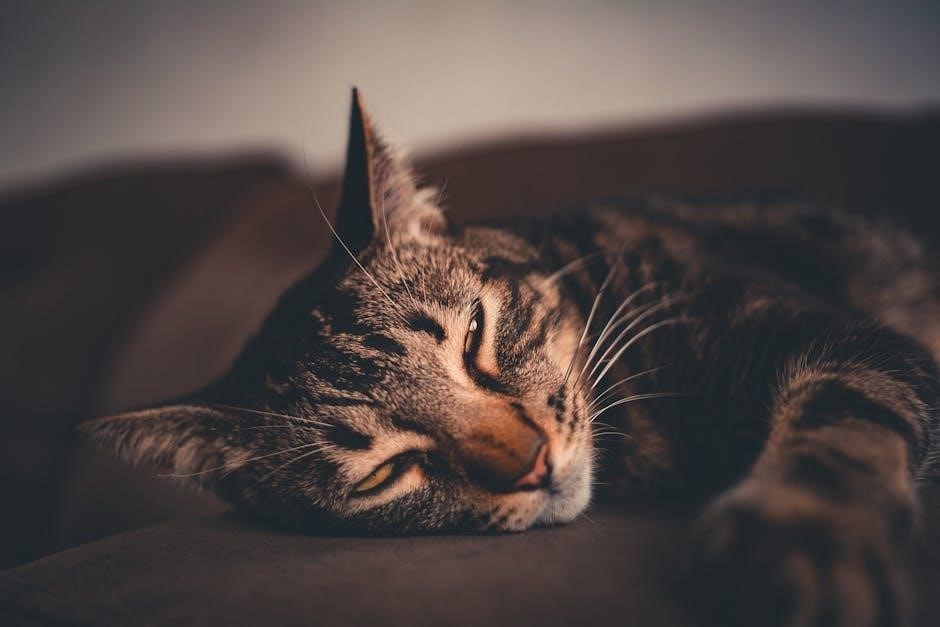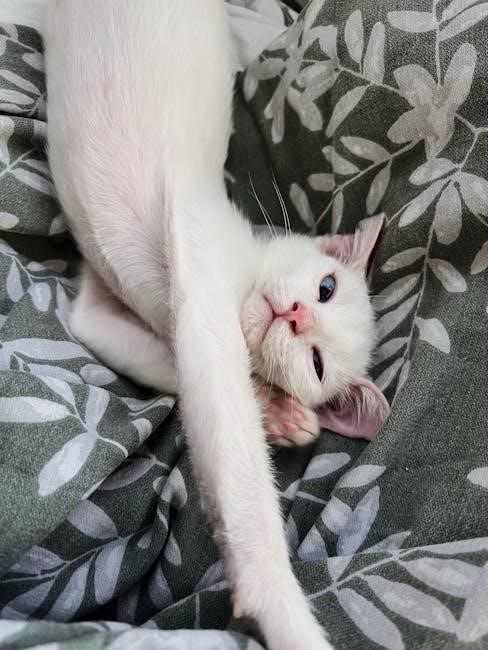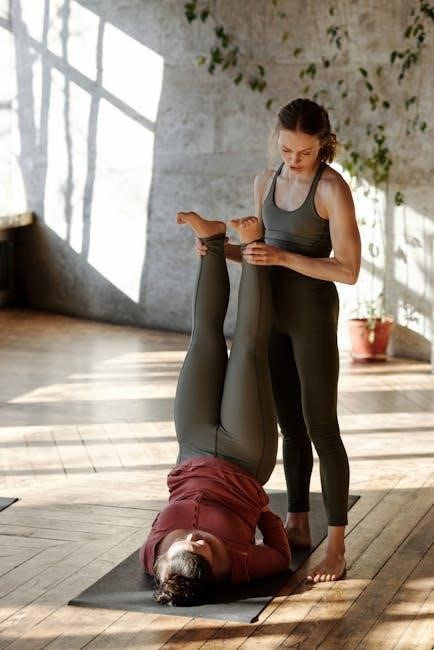Ear stretching, or ear gauging, is a form of body modification involving gradual enlargement of piercings, often for aesthetic or cultural expression. It requires patience and proper technique.
What is Ear Stretching?

Ear stretching, also known as ear gauging, is a body modification practice that involves gradually enlarging a pierced hole in the earlobe or other parts of the ear. It is achieved by inserting larger jewelry over time, creating a permanent or semi-permanent enlargement. The process requires patience and careful technique to avoid damage. Ear stretching is often used as a form of self-expression and cultural identification; It involves using specialized tools like tapers or plugs to incrementally increase the size of the piercing. Proper aftercare is essential to ensure healing and prevent complications. The goal is to achieve a desired aesthetic or symbolic outcome.
Popularity and Cultural Significance
Ear stretching has gained significant popularity worldwide, transcending cultural boundaries. It is rooted in ancient practices, with evidence of its presence in African, Asian, and Indigenous cultures. Today, it is embraced as a form of self-expression and identity. The practice has evolved from traditional rituals to modern fashion, appealing to diverse subcultures. Its cultural significance lies in its ability to connect individuals to their heritage while allowing personal customization. Ear stretching is also recognized in academic circles as a symbol of body modification and cultural adaptation. Its global appeal highlights its enduring relevance in both traditional and contemporary contexts.

Preparing for Ear Stretching
Start with healed piercings, choose high-quality jewelry, and understand gauge sizes. Ensure proper aftercare to promote healing and avoid complications during the stretching process.
Choosing the Right Jewelry
Selecting the right jewelry is crucial for safe and successful ear stretching. Opt for high-quality, non-porous materials like glass or surgical stainless steel to minimize irritation and promote healing. Avoid cheap materials such as acrylic or low-grade metals, as they can cause infections or discomfort. Single-flare plugs are ideal for stretching, as they are easier to insert and remove compared to double-flare options. Ensure the jewelry is specifically designed for stretching, as it will be gentler on your lobes during the process. Proper jewelry selection ensures comfort and supports the overall success of your ear-stretching journey.
Understanding Gauge Sizes
Ear stretching gauge sizes work inversely, with lower numbers indicating thicker jewelry. Most piercings start at 18 gauge, and common sizes for stretching range from 16 gauge to 00 gauge. Starting with a 16 or 14 gauge is recommended after an initial piercing. Gradually increasing sizes allows the skin to heal properly between stretches. It’s important to wait until your lobes are fully healed before moving to the next size. Rushing can lead to tearing or uneven results. Understanding gauge sizes is essential for a safe and successful stretching process, ensuring your lobes remain healthy and visually appealing throughout your journey.

Methods of Ear Stretching
Ear stretching involves techniques like tapering, taping, and dead stretching. Each method suits different preferences and goals, ensuring a comfortable and safe experience. Patience is key.
Tapering Method
The tapering method uses a cone-shaped tool to gradually enlarge the piercing. Start with a smaller gauge and gently insert the tapered end, allowing the skin to stretch naturally. This technique is popular for its effectiveness and control. Professionals often recommend it for precision and reducing discomfort. Proper lubrication and aftercare are essential to prevent irritation and ensure smooth healing. Massaging the area beforehand can improve flexibility and minimize resistance during the process. Patience is crucial, as rushing may cause damage or prolonged healing times. Always use high-quality materials to promote safety and optimal results.
Taping Method
The taping method involves wrapping non-adhesive tape around the back of your jewelry to gradually increase the gauge. This technique is slow and requires patience, as you add a small amount of tape weekly. It’s ideal for those who prefer a non-invasive approach and want to avoid using tapers or plugs. Start by cleaning the area thoroughly and massaging your lobes with oil to enhance flexibility. Wrap the tape snugly but not too tight, ensuring proper blood flow. Over time, your piercing will naturally stretch to accommodate the increasing size. This method is best for small increments and existing stretched ears, not for initial stretching from a piercing. Consistency and hygiene are key to achieving desired results without complications.
Dead Stretching Method
The dead stretching method involves directly inserting a larger plug or jewelry into a fully healed piercing without gradual tapering. It’s a one-step process where the piercing is stretched instantly. This method is best for those who are confident in their piercing’s readiness and prefer a quick approach. Use high-quality, single-flare plugs made from safe materials like glass or steel. Ensure the piercing is completely healed and clean before attempting. Apply a small amount of oil to lubricate the area. Gently push the plug through; if it doesn’t go in easily, stop and wait. Proper aftercare is essential to prevent complications.
Aftercare and Healing
Proper aftercare is crucial for healing and maintaining stretched ears. Wash piercings twice daily with saline solution, soak them, and massage with jojoba oil to promote blood flow.

Proper Cleaning Techniques

Proper cleaning is essential for healthy healing and preventing infections. Wash your hands thoroughly before touching your stretched ears. Use a saline solution (1/4 teaspoon of sea salt in 8 ounces of warm water) to soak the piercings for 5-10 minutes daily. Gently massage the area with jojoba oil to promote blood flow. Avoid harsh chemicals like hydrogen peroxide or alcohol, as they can irritate the skin. Rinse with clean water after soaking and pat dry with a clean towel. Consistency in cleaning ensures a smooth recovery and maintains the integrity of your stretched lobes.
Healing Time and Patience
Healing time varies depending on the individual and the stretching method used. It’s crucial to allow your ears to fully heal between stretches, which can take several months to a year or more. Rushing the process can lead to tears, infections, or uneven results. Avoid stretching further until there’s no swelling, discharge, or discomfort. Patience is key to achieving healthy, stable results. Over-stretching or moving too quickly can cause permanent damage. Consistent aftercare and waiting for your body to signal readiness are essential for a successful and safe ear-stretching journey. Impatience can lead to complications, so stay committed to the process.
Massage Techniques for Healthy Lobes
Massaging your lobes is essential for maintaining healthy, stretched ears. Gently massaging with jojoba oil or a natural lubricant can stimulate blood flow, promoting elasticity and reducing tightness. This practice helps keep the skin supple and ready for further stretching. Regular massages also prevent dryness and irritation, ensuring your lobes remain comfortable and resilient. Use circular motions for 5-10 minutes daily to keep your stretched ears healthy and vibrant. This simple routine supports the overall integrity of your lobes, making the stretching process safer and more effective over time. Consistency is key to achieving optimal results.

Common Mistakes to Avoid
Using low-quality materials and stretching too quickly are common errors. These practices can lead to irritation, scarring, or uneven results, undermining the desired aesthetic and comfort.
Using Low-Quality Materials
Using low-quality materials for ear stretching can lead to irritation, infections, and poor healing. Cheap acrylic or metal plugs may contain harmful chemicals or cause allergic reactions. Avoid double-flare plugs, as they can damage the piercing. Instead, opt for high-quality, non-porous materials like glass, surgical stainless steel, or solid platinum. These options are safer, reduce the risk of complications, and promote healthier healing. Always prioritize reputable brands to ensure your jewelry is free from harmful substances. Low-quality materials can result in scarring, uneven stretching, or prolonged recovery times, making the process more uncomfortable and less successful in the long run.
Stretching Too Quickly
Stretching your ears too quickly can cause severe damage, including tearing, scarring, and uneven results. Allow your piercing to fully heal between stretches, as rushing the process can lead to complications. Gradually increase the gauge size, waiting at least 6-12 months between significant stretches. Massaging your lobes with jojoba oil can help prepare the skin for gradual expansion. Avoid skipping sizes, as this can put excessive strain on the tissue. Patience is key to achieving healthy, evenly stretched ears. Stretching too quickly not only hurts more but can also result in permanent damage, making it harder to achieve your desired outcome.

Maintaining Stretched Ears
Maintaining stretched ears involves regular cleaning, avoiding harsh chemicals, and wearing high-quality jewelry. Proper care ensures healthy, attractive lobes and prevents complications.
Upkeep and Routine Care
Proper upkeep and routine care are essential for maintaining healthy stretched ears. This includes regular cleaning with saline solution and avoiding harsh chemicals. Gently massaging the lobes with jojoba oil can promote blood flow and keep the skin supple. It’s important to avoid submerging stretched ears in water, such as swimming in pools or hot tubs, to prevent bacterial growth. Additionally, wearing high-quality jewelry made from materials like glass or surgical steel is recommended, as they are less likely to cause irritation. Consistent care ensures the longevity and aesthetics of stretched ears. Regular inspection for any signs of irritation or infection is also crucial. By adhering to a strict maintenance routine, individuals can enjoy their stretched ears comfortably and confidently; Proper care not only preserves the health of the lobes but also enhances their appearance, making it a vital part of the ear-stretching journey.

Protecting Your Stretched Lobes
Protecting your stretched lobes involves careful handling and avoiding potential risks. Use jewelry made from high-quality, non-irritating materials like glass or surgical steel to prevent allergic reactions. Avoid tight clothing that may snag or put pressure on the lobes, as this can cause discomfort or tearing. Keep your stretched ears away from harsh chemicals and avoid submerging them in water, such as swimming in pools or hot tubs, to reduce the risk of bacterial infections. Regularly inspect your lobes for signs of irritation or infection and address any issues promptly. Proper protection ensures the longevity and health of your stretched ears.
